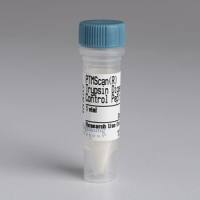Measurement of Rates of Dissociation of Retinoids from the Interphotoreceptor Retinoid-Binding Protein
互联网
282
Information regarding rates of dissociation of ligands from binding proteins is helpful for obtaining insights into the forces that stabilize protein-ligand interactions, as well as for understanding how the ligands distribute between the different cellular compartments, which are their sites of action. Such information is especially useful when the proteins being studied are involved in mediating transport or delivery of ligands to particular cellular locations. The complete scope of the functions of retinoid-binding proteins—either cellular proteins such as the cellular retinol-binding proteins (CRBPs), cellular retinoic acid-binding proteins (CRABPs), and cellular retinal-binding protein (CRALBP); or extracellular proteins like retinol-binding protein (RBP) and interphotoreceptor retinoid-binding protein (IRBP)—is not completely understood at present. However, all of these proteins have been implicated in participating in transport of their hydrophobic ligands across aqueous spaces. Knowledge of the rates by which they release retinoids and of the factors that influence these rates is thus important for understanding how the activities of the proteins as retinoid-carriers are regulated.









